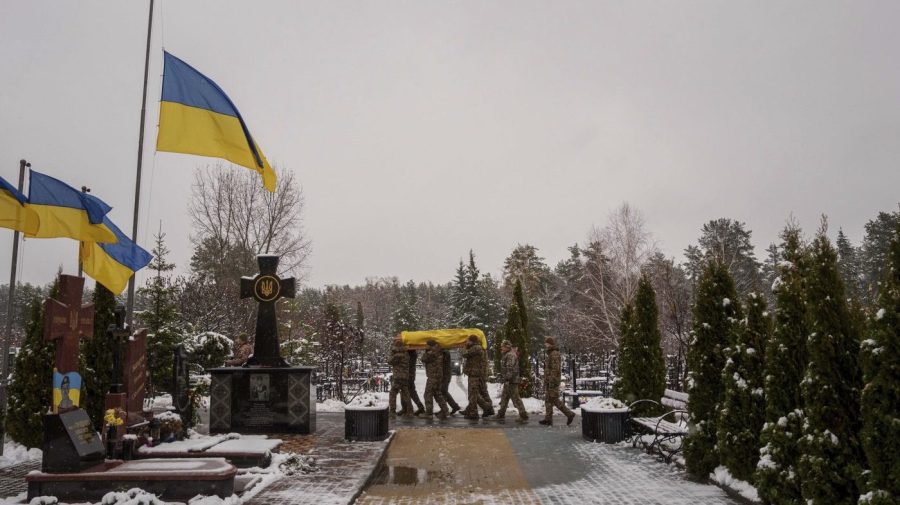
On Nov. 17, after nearly two months of internal soul-searching that resulted in what can only be termed unnecessary delay, President Joe Biden finally agreed to permit Ukraine to employ long-range ATACMS missile systems against Russian targets, initially in the Kursk region that Ukraine seized earlier this year.
His decision was nominally in response to Russia’s having massed some 50,000 troops to retake the region, with the Russian force including some 10,000 North Korean soldiers. The latter appear to be the vanguard of a much larger North Korean contingent, perhaps numbering about 100,000, that is slated to join the Russian army.
Biden’s decision also enabled Ukraine to employ the British air-launched Storm Shadow missiles and France’s Scalp missiles (both jointly developed by the two countries), whose components include U.S.-made terrain contour matching navigation systems, and therefore have been subject to American restrictions on their use. The ATACMS has a number of variants, ranging anywhere from 185 to 375 miles, and the two European systems have a range of about 300 miles. All three missiles can therefore strike deep into Russian territory.
Within two days of its receiving clearance from the White House, Ukraine fired as many as eight ATACMS at a weapons depot near the town of Karachev, in Russia’s Bryansk region, about 70 miles from the Russo-Ukrainian border and about 250 miles from Moscow. The following day, Ukrainian Sukhoi bombers launched 10 British Storm Shadow missiles at an underground command post in Martino, a town in Kursk 25 miles from the border. The facility reportedly hosted Russian and possibly North Korean commanders.
On the same day as Ukraine first employed ATACMS, President Vladimir Putin formally signed a change to Russia’s nuclear doctrine. Putin had previewed the change two months earlier, when reports first emerged that Biden was considering releasing ATACMS to Ukraine.
At the time, Putin asserted that supplying long-range missiles to Ukraine “is not a question of allowing the Ukrainian regime to strike Russia with these weapons or not. It is a question of deciding whether or not NATO countries are directly involved in a military conflict.” Moreover, “It would mean that NATO countries, the U.S., European countries, are at war with Russia.”
Accordingly, the revised doctrine notes that nuclear weapons deter “aggression against the Russian Federation or its allies by any non-nuclear state with the participation or support of a nuclear state [which would be] considered as their joint attack.” The document, which updates the Russia’s official nuclear doctrine from its previous 2020 edition, includes several other key changes, such as its statement that Moscow could employ nuclear weapons to defeat “aggression against the Russian Federation and the Republic of Belarus … with the use of conventional weapon, which creates a critical threat to their sovereignty and/or territorial integrity.”
Attacks inside the Kursk region certainly meet Moscow’s new criteria for employing nuclear weapons. But so too has Ukraine’s employment of shorter-range Western systems, such as the Small Diameter Bombs launched from HIMARS (High Mobility Artillery Rocket System) that Washington transferred to Kyiv in early 2023 and that Ukraine employed to attack Crimea, which the Kremlin considers to be sovereign Russian land. Yet despite increasing attacks on Crimea throughout 2023 and 2024, Moscow has obviously not pulled the nuclear trigger.
Putin’s heavy hints that Russia would not rule out employing nuclear weapons in the war with Ukraine started within months of its invasion. In September 2022, Putin stated, in language that foreshadowed the change in official nuclear doctrine, “If the territorial integrity of our country is threatened, we will certainly use all the means at our disposal to protect Russia and our people. This is not a bluff.” Several of his leading officials were even more explicit.
In practice, however, whatever Russia’s formal nuclear doctrine might state, the decision whether or not to employ nuclear weapons has always belonged to Putin alone. And he has not ordered that they be employed, although the White House has continuously feared that he would.
Indeed, the Kremlin has done little more than make threatening noises, even as the U.S. has gone from supplying Ukraine with HIMARS in 2022; Bradley armored personnel carriers in early 2023; tanks in summer 2024; and finally allowing allied transfers of F-16 fighter aircraft, also in summer 2024.
Whatever his motives, Biden’s decision to grant the Ukrainians the ATACMS that they have long sought may signal that, at long last, with his term of office waning, the president has decided to no longer deter himself out of fear of a Russian nuclear threat that has not materialized. It is tragic that the White House took so long before it decided not to “go wobbly,” as Margaret Thatcher put it to George H.W. Bush on the eve of the 1991 Iraq War.
Had Washington shown a couple of years ago the spine it is showing today in the face of Putin’s hollow nuclear threats, the war in Ukraine might well be long over. And Ukraine would have avoided so much of the massive death and destruction that it continues to suffer.
Dov S. Zakheim is a senior adviser at the Center for Strategic and International Studies and vice chairman of the board for the Foreign Policy Research Institute. He was undersecretary of Defense (comptroller) and chief financial officer for the Department of Defense from 2001 to 2004 and a deputy undersecretary of Defense from 1985 to 1987.

